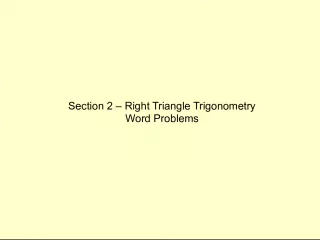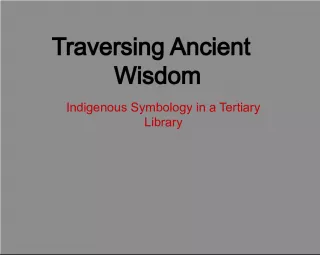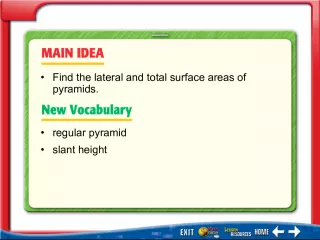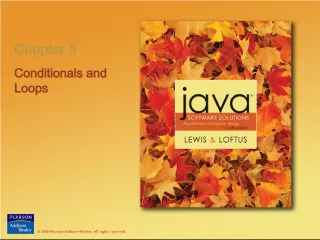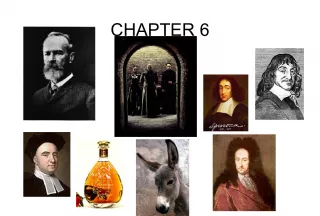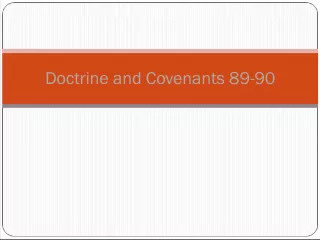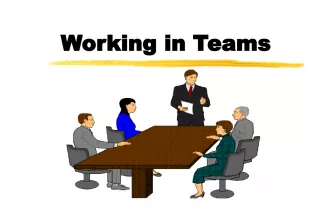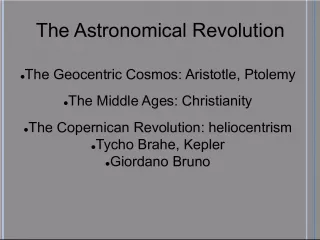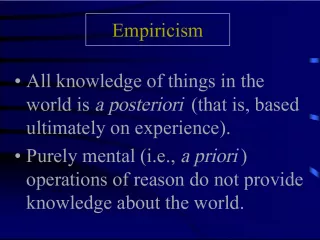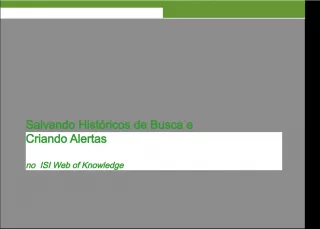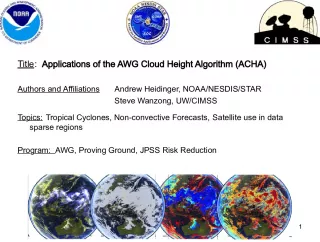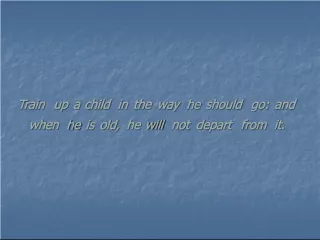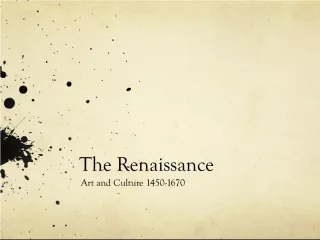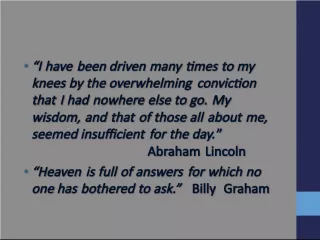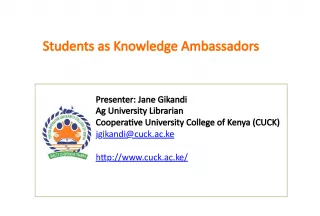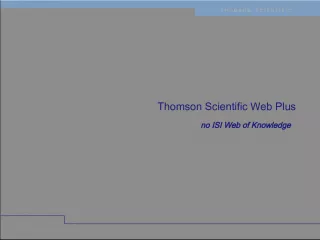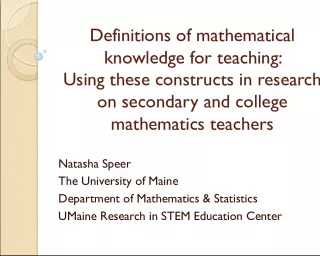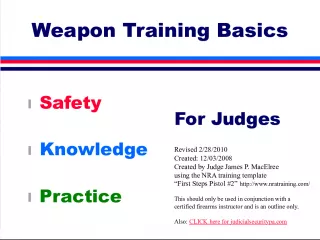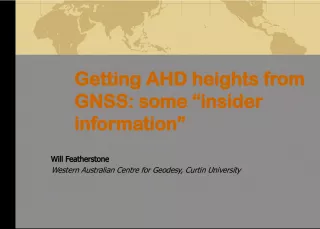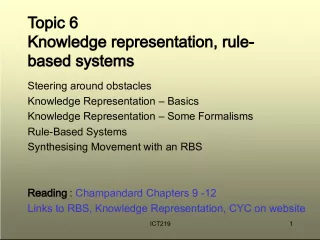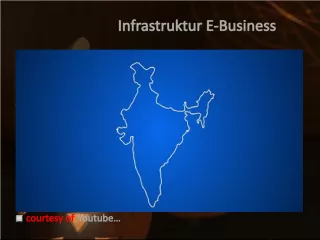The Height of Wisdom and Depth of Knowledge
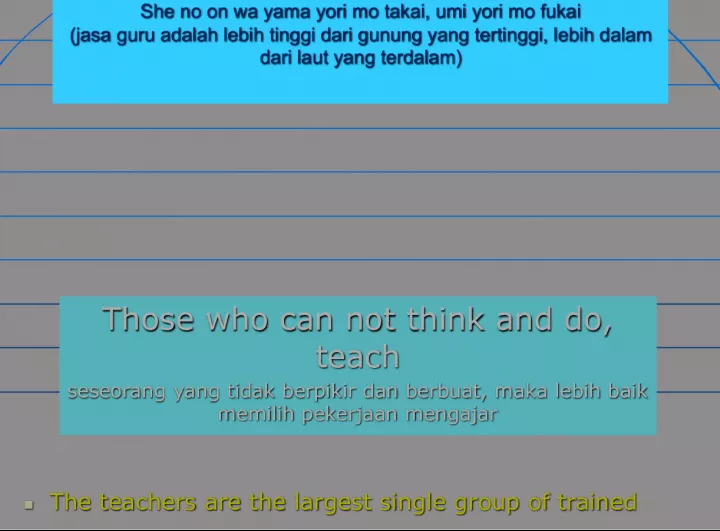

This quote, "She no on wa yama yori mo takai umi yori mo fukai" translates to "The height of wisdom and depth of knowledge surpasses
- Uploaded on | 2 Views
-
 ellakolyada
ellakolyada
About The Height of Wisdom and Depth of Knowledge
PowerPoint presentation about 'The Height of Wisdom and Depth of Knowledge'. This presentation describes the topic on This quote, "She no on wa yama yori mo takai umi yori mo fukai" translates to "The height of wisdom and depth of knowledge surpasses. The key topics included in this slideshow are . Download this presentation absolutely free.
Presentation Transcript
Slide2She no on wa yama yori mo takai, umi yori mo fukai (jasa guru adalah lebih tinggi dari gunung yang tertinggi, lebih dalam dari laut yang terdalam) She no on wa yama yori mo takai, umi yori mo fukai (jasa guru adalah lebih tinggi dari gunung yang tertinggi, lebih dalam dari laut yang terdalam) Those who can not think and do, teach Those who can not think and do, teach seseorang yang tidak berpikir dan berbuat, maka lebih baik memilih pekerjaan mengajar seseorang yang tidak berpikir dan berbuat, maka lebih baik memilih pekerjaan mengajar
Slide3The teachers are the largest single group of trained professionals in the world (Digumarti Bhaskara Rao) The teachers are the largest single group of trained professionals in the world (Digumarti Bhaskara Rao) Good education requires good teachers (International Conference on Education in Geneva) Good education requires good teachers (International Conference on Education in Geneva) Di dunia ini hanya ada dua macam profesi, yakni guru dan selain guru (Daoed Yoesoef) Di dunia ini hanya ada dua macam profesi, yakni guru dan selain guru (Daoed Yoesoef) Jalan terpenting untuk mempertinggi mutu sekolah, sekolah itu ialah mempertinggi mutu pendidikannya (Mr. Muhammad Yamin) Jalan terpenting untuk mempertinggi mutu sekolah, sekolah itu ialah mempertinggi mutu pendidikannya (Mr. Muhammad Yamin)
Slide4UNDANG-UNDANGNOMOR 52 TAHUN 2009 TENTANG PERKEMBANGAN KEPENDUDUKAN DAN PEMBANGUNAN KELUARGA UNDANG-UNDANG NOMOR 52 TAHUN 2009 TENTANG PERKEMBANGAN KEPENDUDUKAN DAN PEMBANGUNAN KELUARGA 1. Improving quality of human resources 2. Quality of human resources based on competences
Slide5TUGAS GURUPROFESI MENGAJAR MELATIH PENELITIAN KEMANUSIAAN MENJADI ORANG TUA KEDUA TRANSFORMASI KEMASYARAKATAN MENCERDASKAN BANGSA INDONESIA
Slide6EE M M P P A A T T J J E E N N I I S S K K O O M M P P E E T T E E N N S S I I Kepribadian Pedagogis Profesional Sosial Mantap & Stabil, Dewasa, Arief, Berwibawa, Akhlak Mulia (1) Norma hukum & sosial, rasa bangga,Konsisten dgn norma; (2) mandiri & etos kerja; (3) berpengaruh positif & disegani; (4) norma religius & diteladani; (4) jujur; Pemahaman peserta didik (PD), perancangan, pelaksanaa, & evalua Pembelajaraan, pengemb.PD (1) Aspek potensi peserta didik (2) teori belajar & pembelajaran, strategi, kompetensi & isi, dan meran- cang pembelj;(3) menata latar & melaksanakan; (4) asesmen proses dan hasil; dan (5) pengemb akademik & nonakademik Menguasai keilmuan bidang studi; dan langkah kajian kritis pendalam- an isi bidang studi ( 1) Paham materi, struktur, konsep, metode Keilmuan yang menaungi, menerapkan dlm kehidupan sehari-hari; dan (2) metode pengembangan ilmu, telaah kritis, kreatif dan inovatif terhadap bidang studi Komunikasi & bergaul dgn peserta didik, kolega, dan masyarakat Menarik, empati, kolaboratif, suka menolong, menjadi panutan, komunikatif, kooperatif
Slide7COGNITIVE DEVELOPMENT COGNITIVE DEVELOPMENT According to Piaget’s theory: According to Piaget’s theory: 1. In the early years, the sensorimotor stage, cognitive development is enhanced by the child’s physical interaction with environment. 1. In the early years, the sensorimotor stage, cognitive development is enhanced by the child’s physical interaction with environment. 2. In the preoperational stage (2 to 5 years) the child use elementary logic and reasoning as they learn to use past experiences and the beginning use of symbols to represent objects in their environment. 2. In the preoperational stage (2 to 5 years) the child use elementary logic and reasoning as they learn to use past experiences and the beginning use of symbols to represent objects in their environment.
Slide83. Concrete operational stage. Between the ages of 7 and 10 years, children move to Piaget’s third stage,. Children reach this stage when they have learned to deal with multiple aspects in the environment at once. 3. Concrete operational stage. Between the ages of 7 and 10 years, children move to Piaget’s third stage,. Children reach this stage when they have learned to deal with multiple aspects in the environment at once. 4. Formal operational stage. This stage may begin as early as age 11 or 12 years. At this age abstract ideas are possible. The enhanced level of cognitive processing allows children to relate one or more parts of a situation to another in the problem solving process. 4. Formal operational stage. This stage may begin as early as age 11 or 12 years. At this age abstract ideas are possible. The enhanced level of cognitive processing allows children to relate one or more parts of a situation to another in the problem solving process.
Slide9Conclusion Piaget Conclusion Piaget Piaget advocated learning by doing. Language and communication skills, reasoning, memory, and attention skills are some of the cognitive skills developed during the elementary school years. All have meaning for the educator. Piaget advocated learning by doing. Language and communication skills, reasoning, memory, and attention skills are some of the cognitive skills developed during the elementary school years. All have meaning for the educator.
Slide10Affective Development Affective Development Affective is the scientific study of emotion or affect. This includes the study of emotion elicitation, emotional experience and the recognition of emotions in others. In particular the nature of feeling, mood, emotionally driven behavior, decision making, attention and self-regulation, as well as the underlying physiology and neuroscience of the emotions. Discussion An increasing interest in emotion can be seen in the behavioral, biological and social sciences. Research over the last two decades suggests that many phenomena, ranging from individual cognitive processing to social and collective behavior, cannot be understood without taking into account affective determinants (i.e. motives, attitudes, moods, and emotions). Affective is the scientific study of emotion or affect. This includes the study of emotion elicitation, emotional experience and the recognition of emotions in others. In particular the nature of feeling, mood, emotionally driven behavior, decision making, attention and self-regulation, as well as the underlying physiology and neuroscience of the emotions. Discussion An increasing interest in emotion can be seen in the behavioral, biological and social sciences. Research over the last two decades suggests that many phenomena, ranging from individual cognitive processing to social and collective behavior, cannot be understood without taking into account affective determinants (i.e. motives, attitudes, moods, and emotions).
Slide11PHYCHOMOTOR DEVELOPMENT PHYCHOMOTOR DEVELOPMENT The elementary school child is capable of controlled purposeful movement. These motor skills are generally referred to as psychomotor skills because they are soluntary actions initiated by impulses from higher brain centers in the motor cortex of the brain. This is in contrast to those reflex actions, which are initiated in lower brain centers or the central nervous system. Many locomotor skills are well established by the time the child enters school. Walking, running, jumping, and hopping, which are executed in an even rhythm, may be accomplished with perharps only a few mechanical errors such as foot placement or use of the arms. The elementary school child is capable of controlled purposeful movement. These motor skills are generally referred to as psychomotor skills because they are soluntary actions initiated by impulses from higher brain centers in the motor cortex of the brain. This is in contrast to those reflex actions, which are initiated in lower brain centers or the central nervous system. Many locomotor skills are well established by the time the child enters school. Walking, running, jumping, and hopping, which are executed in an even rhythm, may be accomplished with perharps only a few mechanical errors such as foot placement or use of the arms.
Slide12Social Development Social Development Socialization, the process of learning behavior acceptable to life in society, is a lifelong process. During the preschool and elementary school years, children move from the social context of the home to the school, peer group, and other social groups such as scouting groups. In these setting they will learn to interact with others and grow to understand the behavior expected in each setting. Socialization, the process of learning behavior acceptable to life in society, is a lifelong process. During the preschool and elementary school years, children move from the social context of the home to the school, peer group, and other social groups such as scouting groups. In these setting they will learn to interact with others and grow to understand the behavior expected in each setting.
Slide13HardProfession Hard Profession Pekerjaan Profession al Soft Profession • Perilaku Dapat didetailkan • Perilaku Relatif pasti • Output pend. Dapat distandarisasikan • Kualifikasi lulusan jelas • Perlu kadar seni • Tidak dapat dijabarkan secara detail • Tidak menuntut lulusan dg standar ttt • Lulusan dengan kemampuan minimal • Kemampuan akan berkembang sesuai perkembangan masyarakat • In-service training “penting”
Slide14 Dimention Of Human Resources N orm perik emanusiaan , Balances Advantage
Slide15 RELATIONSHIP OF HUMAN RESOURCES KO POLICY QUANTITY QUALITY MOBILIT Y MANAGEMENT
Slide16 TEACHER QUALITY NON-FISIK FISIK Kesehatan, Pendidikan Ekonomi/Kemampuan daya beli Nilai Agama Nilai Sosial budaya Mental spiritual, Ketaqwaan, Kesantunan, Berbudaya, Berkepribadian, dll
Slide17TINGKAT IPM JAWA BARAT TINGKAT IPM JAWA BARAT Berdasarkan angka dari Badan Pusat Statistik (BPS) Jawa Barat, Berdasarkan angka dari Badan Pusat Statistik (BPS) Jawa Barat, IPM tahun 2007 mencapai 70,71 poin IPM tahun 2007 mencapai 70,71 poin IPM tahun 2008 mencapai 71,12 poin IPM tahun 2008 mencapai 71,12 poin IPM Tahun 2009 mencapai 71,50 poin IPM Tahun 2009 mencapai 71,50 poin IPM tahun 2010 mencapai 72,00 poin IPM tahun 2010 mencapai 72,00 poin
Slide18PENGEMBANGAN KUALITASMASYARAKAT Untuk mewujudkan manusia yg sehat jasmani dan rohani, cerdas, mandiri, beriman, bertakwa, berakhlak mulia, dan memiliki etos kerja yg tinggi : Dilakukan melalui peningkatan kesehatan, pendidikan, perekonomian, nilai agama dan nilai sosial budaya. Diselenggarakn oleh Pemerintah dan Pemerintah Daerah bersama masyarakat -> pembinaan dan pemenuhan pelayanan serta penyediaan prasarana dan jasa.
Slide19SKENARIO IPM 80 TAHUN 2008-2025 SKENARIO IPM 80 TAHUN 2008-2025
Slide20AKSELERASI INDEKS PENDIDIKAN AKSELERASI INDEKS PENDIDIKAN TARGET KOMPONEN IPM TAHUN 2015 TARGET OPERASIONAL KEGIATAN PRIORITAS 1. Meningkatkan AMH Menjadi 98% 2. Meningkatkan Rata-rata Lama Sekolah (RLS) Menjadi 12 Tahun A. Jumlah Siswa SMU/SMK/MA/Paket C Minimal 80% B. Penduduk Usia di Atas 15 Tahun Minimal 85% Berpendidikan SMU /SMK dan Yang Sederajat C. Kegiatan Prioritas Beasiswa Paket B dan C, Secara Masal D. Peningkatan Daya Tampung Berupa Perbaikan Sarana/Prasarana E. Pendidikan 9 Tahun (Mulai Kelas 1 dan Lulus Pada Kelas 9) F. Segmentasi role sharing jenjang pendidikan, misalnya: pemkab/kota menangani SD , pemprov menangani SMP dan SMK. 1. Penuntasan Pemberantasan Buta Aksara pada Tahun 2010 melalui Keaksaraan Fungsional Program 32 Jam 2. Tahap Pembinaan dan Pelestarian, Pasca Penuntasan Buta Aksara 3. Bantuan Operasional Siswa (BOS) Tingkat Provinsi 4. Peningkatan Daya Tampung melalui Perbaikan dan Penyediaan Sarana dan Prasarana Sekolah 5. Pencanangan Wajib Belajar 12 Tahun di Seluruh Kabupaten/Kota se Jawa Barat 6. Beasiswa Pendidikan Menengah dan Tinggi Bagi Siswa/Mahasiswa Berprestasi dari Keluarga Tidak Mampu 7. Program Pendidikan Kelas 1 s.d. 9 dalam Rangka Jabar Bebas Putus Jenjang Sekolah 8. Penyelenggaraan Paket B dan C Secara Massal
Slide21AKSELERASI INDEKS KESEHATAN AKSELERASI INDEKS KESEHATAN TARGET KOMPONEN IPM TARGET OPERASIONAL KEGIATAN PRIORITAS Meningkatkan Angka Harapan Hidup (AHH) A. Memberikan penyuluhan secara teratur akan pentingnya aktivitas fisik bagi kesehatan masyarakat B. Melaksanakan program Jumat bersih dan bergerak pada setiap instansi pemerintah dan swasta dengan pengawasan dokter C. Melakukan pengukuran kondisi fisik setiap anggota masyarakat secara periodik D. Menyediakan sarana dan prasarana olahraga rekreasi di setiap sudut ruang terbuka E. Memberikan pelayanan kesehatan gratis bagi masyarakat yang akan dan sudah melakukan olahraga 1. Pelayanan kesehatan ibu bersalin. 2. Pelayanan kesehatan bayi dan balita 3. Pencegahan dan penanggulangan gizi buruk 4. Pelayanan kesehatan masyarakat miskin 5. Penyediaan dan penempatan tenaga penggerak olahraga pada setiap kecamatan 6. Pemenuhan Ketersediaan obat
Slide22AKSELERASI INDEKS DAYA BELI AKSELERASI INDEKS DAYA BELI TARGET KOMPONEN IPM TAHUN 2015 TARGET OPERASIONAL KEGIATAN PRIORITAS Meningkatkan Paritas Daya Beli Menjadi Rp 654.250,00 A. Mendorong Pencapaian Laju Pertumbuhan Ekonomi (LPE) yang berkisar antara 7 – 8 % (asumsi rasional) B. Meningkatkan Pemahaman Masyarakat Mengenai Konsumsi Terhadap 27 Komoditas Yang Menjadi Indikator Utama Indeks Daya Beli, Misal: Beras Lokal, Komoditas Sayuran (Bayam) Dan Buah-buahan (Pepaya) 1. Pengembangan Perberasan di Jawa Barat melalui West Java Rice Center 2. Ketahanan pangan 3. Gerakan Multi Aktivitas Agribisnis ( GEMAR) 4. Gerakan Pengembangan Perikanan Muara Selatan dan Pantai Utara (GAPURA) 5. Gerakan Pengembangan dan Perlindungan Pasar tradisional (GEMPITA) 6. Peningkatan Daya Saing , Industri Kreatif, Industri Agro, Penguatan KUKM 7. Pusat Perdagangan Komoditi Agro 8. West Java BoI 9. Pariwisata dan jasa unggulan 10. Hutan dan perkebunan rakyat
Slide23ConclusionsConclusions In planning and conducting education process, the whole child must be considered. Children mature at different rates. In planning and conducting education process, the whole child must be considered. Children mature at different rates. Their cognitive, affective, psychomotor, and social characteristics may vary developmentally. In meeting the needs of children the teacher must plan experiences appropriate to characteristics of the individuals and the class. Education process will only be successful if the activities meet the total needs of children. Their cognitive, affective, psychomotor, and social characteristics may vary developmentally. In meeting the needs of children the teacher must plan experiences appropriate to characteristics of the individuals and the class. Education process will only be successful if the activities meet the total needs of children.
